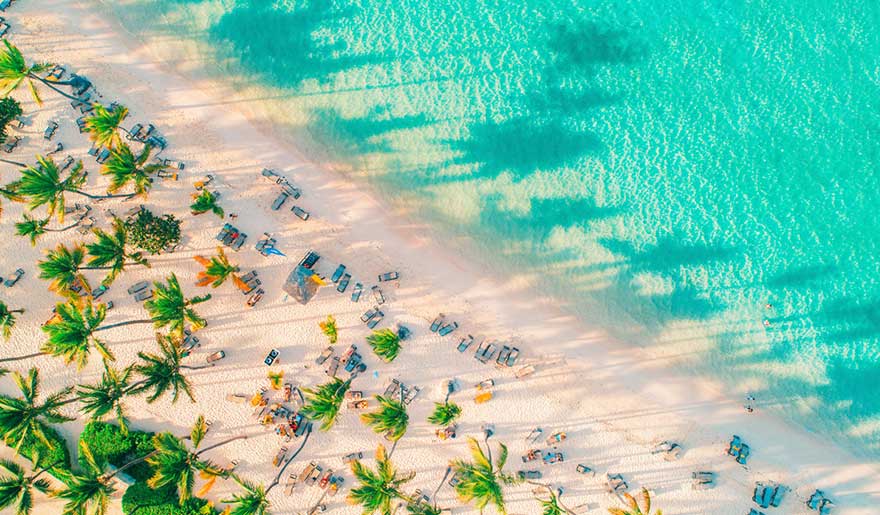
08 Jun Complete Guide to Tourism in the Dominican Republic
Complete Guide to Tourism in the Dominican Republic
The Dominican Republic is one of people’s favourite destinations for enjoying their holidays worldwide. Its wide range of leisure activities and natural attractions makes it the obvious choice for many, because in addition to guaranteed sun and beach tourism practically all year round, it also offers charming towns, wild nature, and a first-class local cuisine that’s centred around fish, seafood, fruits and vegetables. It also has a unique environment thanks to the Caribbean culture and lifestyle and, more specifically, the Dominican way of life, which makes sure that everyone who visits this country gets immersed in the meringue and one of the most famous carnivals in the world.
When to travel to the Dominican Republic
Any time is really a good time to travel to the Dominican Republic. The country’s overall climate is warm and tropical. This means the temperatures remain relatively stable throughout the year, hovering between 25 and 35ºC. The highest temperatures are reached during the months of July and August, and the lowest in November, December and January. However, it’s important to take into account the rainy season and, paradoxically, the fact that the most rainfall is recorded in the summer months, with two main rainy seasons: from April to June and from September to November. Nevertheless, the rain usually comes in short bursts, with the sun shining again after just a few minutes, meaning these rainfalls won’t affect your holidays in any way and will allow you to enjoy all of your plans.
As you can see, any month of the year can be a good time to visit depending on the type of tourism you want to do. It may be a good idea to keep in mind that the peak season coincides with the period between June and September when you’re deciding on the perfect time to travel to this heaven on earth.
Where to stay in the Dominican Republic
Within the Dominican Republic, we’ll find several tourist destinations, but there are two that stand out for being home to the largest selection of hotels: Punta Cana and Puerto Plata.
Between these two regions, Punta Cana offers tourists a greater variety. Its beaches are of a better quality and it’s easier to find good weather due to its privileged location in the southeast of the country. In addition, it is just two and a half hours away by car to the capital, Santo Domingo, in addition to being close to La Romana, making it more culturally diverse in addition to the quality of its beaches and its wide range of leisure activities with commercial spaces like The Boulevard. It’s no surprise that it’s one of the best areas to stay in the Dominican Republic.
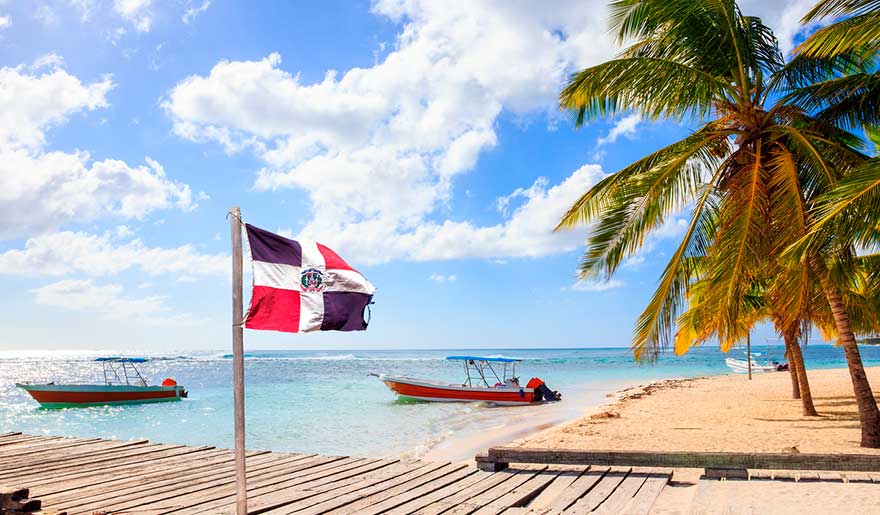
On the other hand, Puerto Plata also has great attractions and is very close to large cities such as Santiago de los Caballeros. However, the rainy season is more prevalent in this area, present virtually throughout the entire year, except for the months of February, March and April, which tend to be the least rainy.
Cities of interest in the Dominican Republic
The capital of the Dominican Republic, Santo Domingo, is the main urban hub in the country. This means that it has an extensive cultural offering and that its streets allow us to breathe in the history of this impressive place. With its origins dating back to the 15th century, it has a historic centre called the colonial city, which preserves much of the architecture that began to be developed in the New World by the settlers who arrived in America. But not everything is directly rooted in the past in the Dominican Republic, since its second most important city, Santiago de los Caballeros, is a modern and cosmopolitan city that is full of surprises for those who come to visit it and explore its monuments and museums, such as the Tobacco Museum. In addition, other places such as Cap Cana, San Cristóbal or Villa Mella have charming places for you to discover on your next holidays in the Dominican Republic.
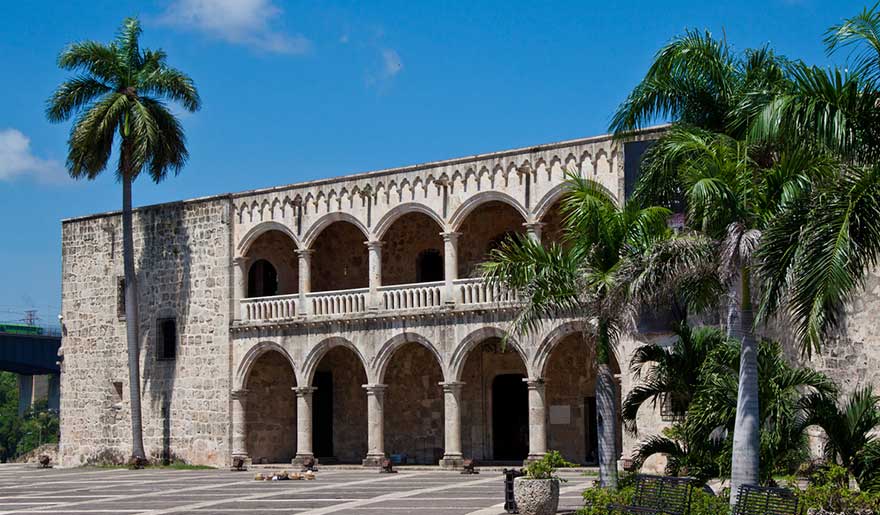
Beaches in the Dominican Republic
When we talk about the Dominican Republic, the first thing that comes to mind are its endless white sand beaches and turquoise waters. You should know that most of them are like this, but there are others that will surprise you with the abundant vegetation that surrounds and practically hides them, turning them into a space reserved for a privileged few.
Among the most famous beaches, Playa Bávaro stands out, an easily accessible beach that is perfect at any time of the year and suitable for all audiences. Whether you come to spend your holidays alone, as a family with your children, with your partner or with your friends, at Playa Bávaro you can spend all the time you’d like because it’s a haven of peace and tranquillity where you can enjoy the sea breeze and see how the coconut trees sway slowly in the wind. Without a doubt, it’s the perfect beach to visit at any time of year, where you can go for a swim in the sea whenever you want.
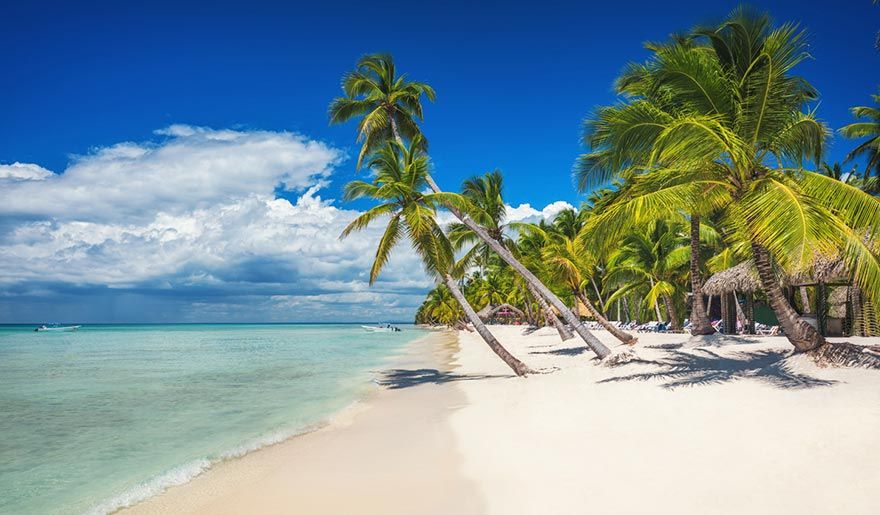
If you’re looking to get to know the rest of the Dominican Republic by going on excursions or traveling by car, bus or taxi, you can head over to some of the wilder beaches. Perhaps the most popular of all is Cayo Levantado, also known as Bacardi Island. This beach is considered a true slice of paradise on earth. Strolling along the beach and admiring all the nature that surrounds it is truly a pleasure, as is swimming in its warm waters. Nor can you miss out on Saona Island. Its virgin beaches and fine sand make this small island in the southwest of the country one of the most frequently visited hideaways. In addition, it is very easy to reach by boat from Punta Cana, Santo Domingo or Bayahibe.
National parks in the Dominican Republic
The Dominican Republic offers visitors a totally different side to it than you might expect. If you’re thinking that you’re only going to find beaches here, it’s important for you to know that the country is one of the greenest in the world, and that the inland part of the Dominican Republic has natural landscapes worth visiting. Proof of this are the national parks, the most famous of which is probably the Los Haitises National Park. It is located in the northeast of the Dominican Republic, framed in the Bay of Samaná. Its landscape contains unique elements, such as the Bay of San Lorenzo, the keys and the mangrove populations. In addition, it is home to a significant part of the country’s plants and wildlife. But, in addition to Los Haitises, you’ll find others such as the National Park of the East, one of the most spectacular areas in the Dominican Republic, located in La Romana; or the 3 Eyes National Park, just eight kilometres from Santo Domingo. This space was discovered in 1916 and has underground caverns that the Taino people used as a refuge or a place to celebrate their rituals.
Typical food in the Dominican Republic
Special mention should be made of the typical and traditional recipes from the Dominican Republic. Its food has the characteristics of what is known as “Creole cuisine”, which is the name given to dishes of European origin that were brought to America and that have continued to evolve to adapt to the products of the new continent or to the possibilities of each region.
One of the tastiest dishes of its gastronomy is mangú, made from green bananas and which is present in all regions of the Dominican Republic. It is very common to eat for breakfast, but over the years it has become even more popular and it is now also common to find it at other meals such as lunch or dinner. But there’s more than just the mangú, with many other delicious recipes such as “sancocho” or Dominican “tostones”, as well as others with more familiar names such as stewed chicken, fish with coconut milk or stewed beans. You’ll notice in their recipes that the freshness of the vegetables becomes very evident, with products that stand out such as fish and shellfish. Eating a freshly caught lobster is something that you shouldn’t miss on your next holidays in the Dominican Republic.
Festivals worth experiencing
In addition to nature and unique places, the Dominican Republic has a wide range of festivals, some of which are very famous in the Caribbean. Some share certain characteristics with those in Spain, the result of the historical past shared by these two countries, while others are original to the island.
The most traditional festival in the Dominican Republic is that of the patron saint of the country, Our Lady of Altagracia, considered to be the protective and spiritual mother of the Dominican people. Her festival is celebrated on January 21st and it is in the basilica of Higüey, in the Playa Bávaro area, where the celebration is most important and where many Dominicans and visitors gather to celebrate this day together.
But not all the festivals are of religious origin. For example, the merengue festival is held during the month of July, the most popular dance in the Dominican Republic. Its official headquarters are in Santo Domingo, but during the month of July the entire island moves to the rhythm of this style of music. And if you like to dance and have fun and you’re visiting the island at the beginning of March, you can’t miss Carnival. The most famous of all those that are celebrated in the country is the La Vega Carnival, where the first celebrations date back to 1502. Year after year, this Carnival becomes even more important, gaining international fame, and it is considered to be the most joyous in the Caribbean thanks to the “Cojuelos” devils that fill the streets in the centre of town and begin to spread their mischief as part of the show. Guaranteed fun!
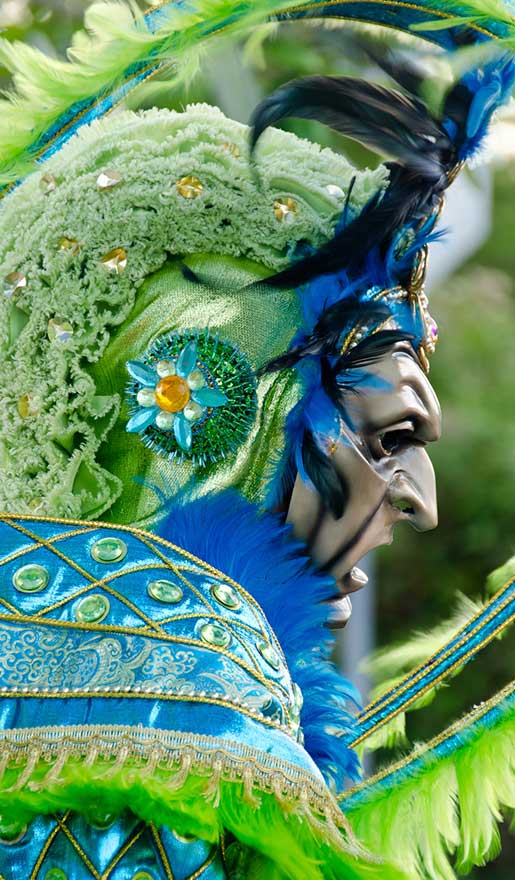
As you can see, the Dominican Republic is a country that welcomes tourists with open arms. Because once you step on Dominican soil, you will no longer be a tourist but another “inhabitant” of this little slice of paradise on earth.





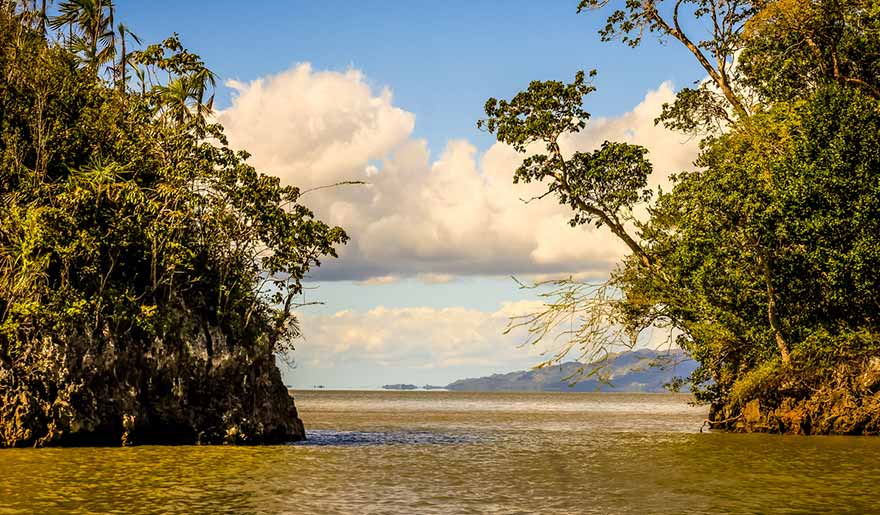
No Comments